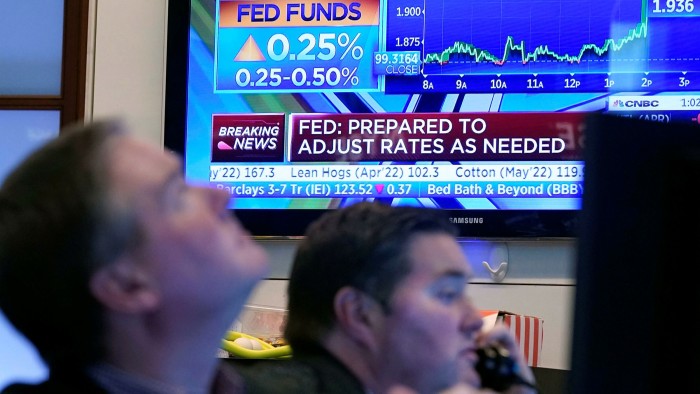T Rowe Price to target rising rates with planned bond ETF

Simply sign up to the Exchange traded funds myFT Digest -- delivered directly to your inbox.
Latest news on ETFs
Visit our ETF Hub to find out more and to explore our in-depth data and comparison tools
T Rowe Price plans to add strategies to its nascent bond ETF suite, including one that aims to defend portfolios from rising interest rates.
The manager plans to launch the Floating Rate ETF and the US High Yield Bond ETF, according to paperwork filed last week. The products are set to join three other fixed-income ETF strategies that the firm launched in September 2021.
The forthcoming ETFs will be managed by the same portfolio managers and with broadly similar strategies to existing mutual funds, the $5.6bn Floating Rate Fund and $501mn US High Yield Bond Fund, a spokesperson for the Baltimore-based shop confirmed.
Kevin Loome will run the high-yield ETF, and Paul Massaro will oversee the floating-rate strategy.

This article was previously published by Ignites, a title owned by the FT Group.
Both new ETFs are priced below the cheapest share classes of the existing mutual funds. The US High Yield Bond ETF will charge 56 basis points, compared to 60 bps for institutional-class shares of the mutual fund. The Floating Rate ETF will charge 61 bps, compared to 65 bps for institutional-class shares of its mutual fund counterpart.
Both ETFs are scheduled to launch on or around August 1, the preliminary prospectuses show.
Floating-rate bond ETFs, which include bank loans and senior notes, are gaining attention from investors because their structure allows their interest rates to change periodically based on prevailing rates.
Invesco and Franklin Templeton executives last month noted strong flows into their bank loan products and ultrashort bond strategies, as investors brace for sinking bond values with rising rates.
Bank loan ETFs took in $2.2bn during the first four months of 2022, according to Morningstar Direct data, and booked positive net sales for 18 months ended last month. Bank loan mutual funds, meanwhile, raked in $22.2bn year to date through April, second only to large blend mutual funds’ $24.7bn in net sales.
Assets in all bank loan ETFs represented $21bn at the end of April, while bank loan mutual funds collectively represented $119bn as of April 30, according to Morningstar.
For T Rowe, the Floating Rate Fund has been its best-selling bond mutual fund this year, with $1.4bn of net sales through April, according to Morningstar Direct. Only the firm’s $10.9bn US Equity Research fund netted more new cash during the same time period, at just under $3bn.
Morningstar director of manager research Russ Kinnel in March named the T Rowe mutual fund one of his top picks in the bank loan space because of Massaro’s record of producing “strong returns with minimal risk”.
“Running a bank loan fund is challenging,” he noted, as the securities tend to be less liquid and have lower credit quality than other bonds.
Massaro has been on the fund since 2011, the fund’s fact sheet shows.
Floating Rate has generated top-quartile performance in the one-, three- and five-year time periods ended May 12, Morningstar Direct data show. One-year returns of 11 bps beat the Morningstar bank loan category median fund by 116 bps, three-year returns of 2.4 per cent were better by 90 bps and five-year returns of 2.9 per cent bested the peer median return by 65 bps.
High-yield strategies, meanwhile, have seen outflows as investors walk away from riskier assets amid rising rates. High-yield bond mutual funds shed $18.9bn in assets in the first four months of the year, and high-yield bond ETFs bled just over $16bn during the period.
*Ignites is a news service published by FT Specialist for professionals working in the asset management industry. It covers everything from new product launches to regulations and industry trends. Trials and subscriptions are available at ignites.com.
Latest news on ETFs
Visit our ETF Hub to find out more and to explore our in-depth data and comparison tools

Comments